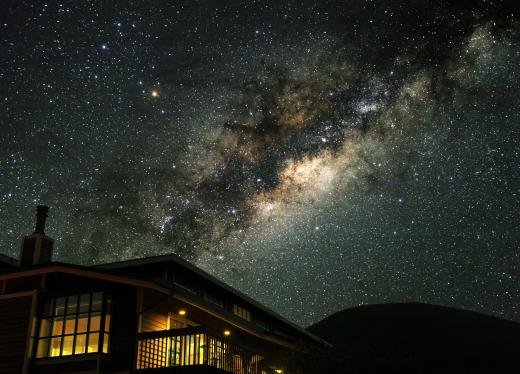What are H II Regions?
 Michael Anissimov
Michael Anissimov
H II regions, also known as emission nebulae, are glowing clouds of gas and plasma up to several hundred light-years across. H II regions are named after the large amounts of ionized atomic hydrogen they contain -- in astronomical parlance, H I regions refer to neutral atomic hydrogen, H II refers to ionized atomic hydrogen, and H2 refers to molecular hydrogen, the primary form in which hydrogen takes when synthesized in labs. H II regions are well known as nebulae where star formation is taking place.
The light that H II regions emit comes from all the ionized gas within. The cause of the ionization are young, hot blue stars which emit large quantities of heat and light. H II regions are among the most fascinating targets in astronomy because of the star formation taking place in them. Unfortunately, the star formation itself is concealed from us in the form of Bok globules -- pockets of gas within H II regions so dense that they obscure their contents. Typically, a Bok globule contains gas of about 10-50 solar masses in an area one light year across. More than one star typically forms within such a globule, which is why stars are often found in clusters.

An H II region can be thought of as a nebula with a density somewhere in between that of a giant molecular cloud (which is too large and diffuse to have ionized hydrogen, thus its primary component is molecular hydrogen) and the denser Bok globules, in which actual star formation takes place. H II regions are only found in spiral galaxies, and always in the arms of the spiral. They are never found in elliptical galaxies because these galaxies are thought to have been formed as the result of galactic collisions. During galactic collisions, any preexisting H II regions are likely to be agitated and their density increased to the point where almost all of the gas forms into stars, leaving behind little else.
AS FEATURED ON:
AS FEATURED ON:











Discuss this Article
Post your comments